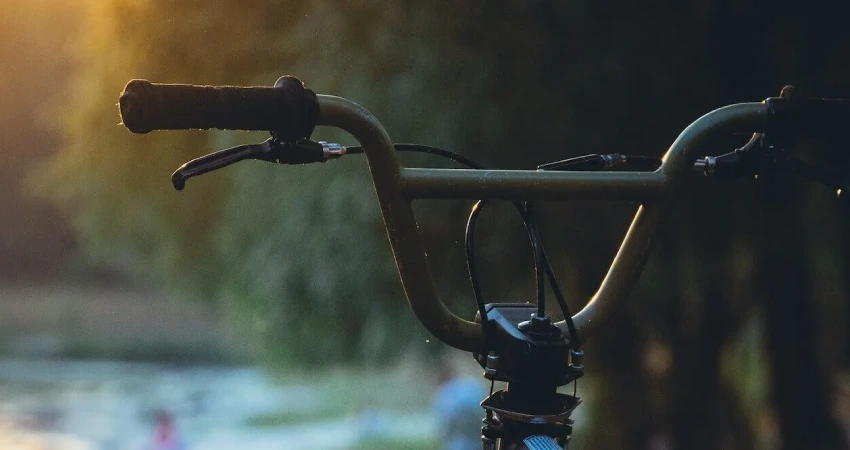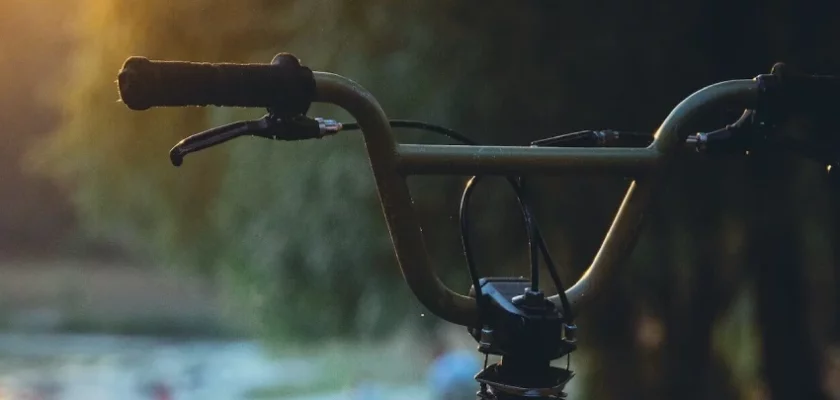Whether you are an experienced cyclist or a beginner, learning how to straighten bent handlebars is a valuable skill that can save you both time and money.
Imagine riding your bike and suddenly realizing that your handlebars are not aligned properly. It can be a challenging situation, but fear not! With a few simple techniques and the right tools, you can have your handlebars restored to their original position in no time.
So, if you’re ready to take matters into your own hands and get your bicycle back on track, let’s dive into the fascinating world of how to straighten bent handlebars!
Fixing Bent Handlebars: A Step-By-Step Guide

Having bent handlebars on your bike can be frustrating and can compromise your riding experience. But fear not! With a few simple steps and some basic tools, you can easily straighten those bent handlebars and get back on the road.
Why Do Handlebars Get Bent?
Before diving into the steps of straightening bent handlebars, it’s essential to understand why this happens in the first place. There are a few common reasons:
- Impact: Handlebars can get bent due to a crash, collision, or striking an object while riding.
- Rough handling: If your bike is transported improperly or subjected to rough handling, it can result in bent handlebars.
- Over tightening: Over-tightening the handlebar clamp can also cause the handlebars to become deformed.
Tools You Will Need
To straighten bent handlebars, you will need the following tools:
- Allen wrenches: These are essential for loosening and tightening bolts.
- Adjustable wrench: Used for adjusting the stem and handlebars.
- Towel or cloth: To protect the handlebars from getting scratched or damaged during the process.
- Rubber mallet or hammer: For gentle tapping and adjustments.
Step-by-Step Guide to Straighten Bent Handlebars
Now let’s get into the nitty-gritty of how to straighten bent handlebars:
Step 1: Safety First
Before starting any repairs or adjustments, make sure to take necessary precautions:
- Find a suitable workspace with enough room to work around your bike.
- Always wear gloves and protective eyewear to prevent any injuries.
- Ensure your bike is stable and won’t tip over during the process.
Step 2: Loosen the Components
To straighten the handlebars, you’ll need to loosen various components. Follow these steps:
- Loosen stem bolts: Use the appropriate Allen wrench to loosen the bolts on the stem clamp. Loosen them just enough to allow for adjustment but not too much that the handlebars become loose.
- Adjust brake levers and shifters: If your bike has integrated brake levers and shifters, loosen the bolts that secure them to the handlebars. This will allow for movement during the straightening process.
- Check cables: Verify if any cables are pulling or restricting the handlebars. Loosen or disconnect them temporarily to provide more flexibility.
Step 3: Assess the Bend
Identifying the type and severity of the bend will help determine the best approach for straightening. Common types of bends include:
- Upward or downward bend: This can be fixed by adjusting the handlebars up or down using the stem.
- Side-to-side bend: This requires gently bending the handlebars from side to side to bring them back to alignment.
- Twisted bend: In this case, the handlebars may be rotated out of alignment. To fix it, twist them back into the correct position.
Step 4: Straightening Techniques
Depending on the type of bend, choose one of the following techniques:
1. For an upward or downward bend:
- Loosen the stem bolts just enough so you can make adjustments.
- Carefully rotate the handlebars up or down to align them with the front wheel.
- Tighten the stem bolts gradually, alternating between bolts, to ensure even pressure.
2. For a side-to-side bend:
- Firmly grip the handlebars near the bend using both hands.
- Gently apply pressure to bend the handlebars in the opposite direction.
- Gradually release the pressure and check the alignment.
- Repeat this process until the handlebars are straight.
For a twisted bend:
- Firmly grip the handlebars near the twisted section.
- Rotate the handlebars in the opposite direction of the twist.
- Check the alignment and repeat the process if necessary.
Step 5: Final Adjustments
Once the handlebars are straightened, follow these steps to ensure everything is in order:
- Tighten stem bolts: Use the appropriate Allen wrench to tighten the stem bolts securely. Ensure even pressure by tightening them gradually and alternating between bolts.
- Realign brake levers and shifters: Adjust the position of the brake levers and shifters so they are comfortable and easily accessible.
- Check cables: Make sure all cables are properly reattached and are not pulling or restricting the handlebars.
- Test ride: Take a short test ride to ensure the handlebars feel comfortable and secure. If you notice any issues, re-evaluate the alignment and make necessary adjustments.
Frequently Asked Questions
1. How can I tell if my handlebars are bent?
To check if your handlebars are bent, align your front wheel with a reference point and observe if both ends of the handlebars line up with it. If they don’t, it’s likely they are bent.
2. Can I straighten bent handlebars myself?
Yes, you can try straightening them yourself. Loosen the stem bolts, align the bars with the front wheel, and tighten the bolts back. However, if you’re unsure or uncomfortable doing it, seek professional help.
3. What tools do I need to straighten bent handlebars?
To straighten bent handlebars, you’ll need an Allen wrench or a socket wrench to loosen the stem bolts. Additionally, having a reference point, like a vertical object or a straight edge, will be helpful for alignment.
4. Are there any precautions I should take while straightening handlebars?
Ensure your bike is properly supported to avoid accidents. Avoid excessive force when aligning the handlebars, as it might damage the stem or other components. If you encounter any resistance or difficulty, consult a bike mechanic.
5. What should I do if I’m unable to straighten my bent handlebars?
If your attempts to straighten the handlebars are unsuccessful or if you’re unsure about the process, it’s recommended to take your bike to a professional bike shop. They have the expertise to handle the situation correctly.
Final Thoughts
In conclusion, straightening bent handlebars requires careful assessment and proper technique. Firstly, ensure your safety by wearing protective gear and inspecting the handlebars for any underlying damage. Next, follow a step-by-step process, gently applying pressure to regain their original alignment.
Remember to make minimal adjustments and avoid excessive force, as this can further damage the handlebars or compromise their structural integrity. If you’re unsure or uncomfortable doing this yourself, seek professional assistance to ensure a safe and accurate repair.
By following these guidelines on how to straighten bent handlebars, you can restore your bike’s functionality and ride with confidence again.


